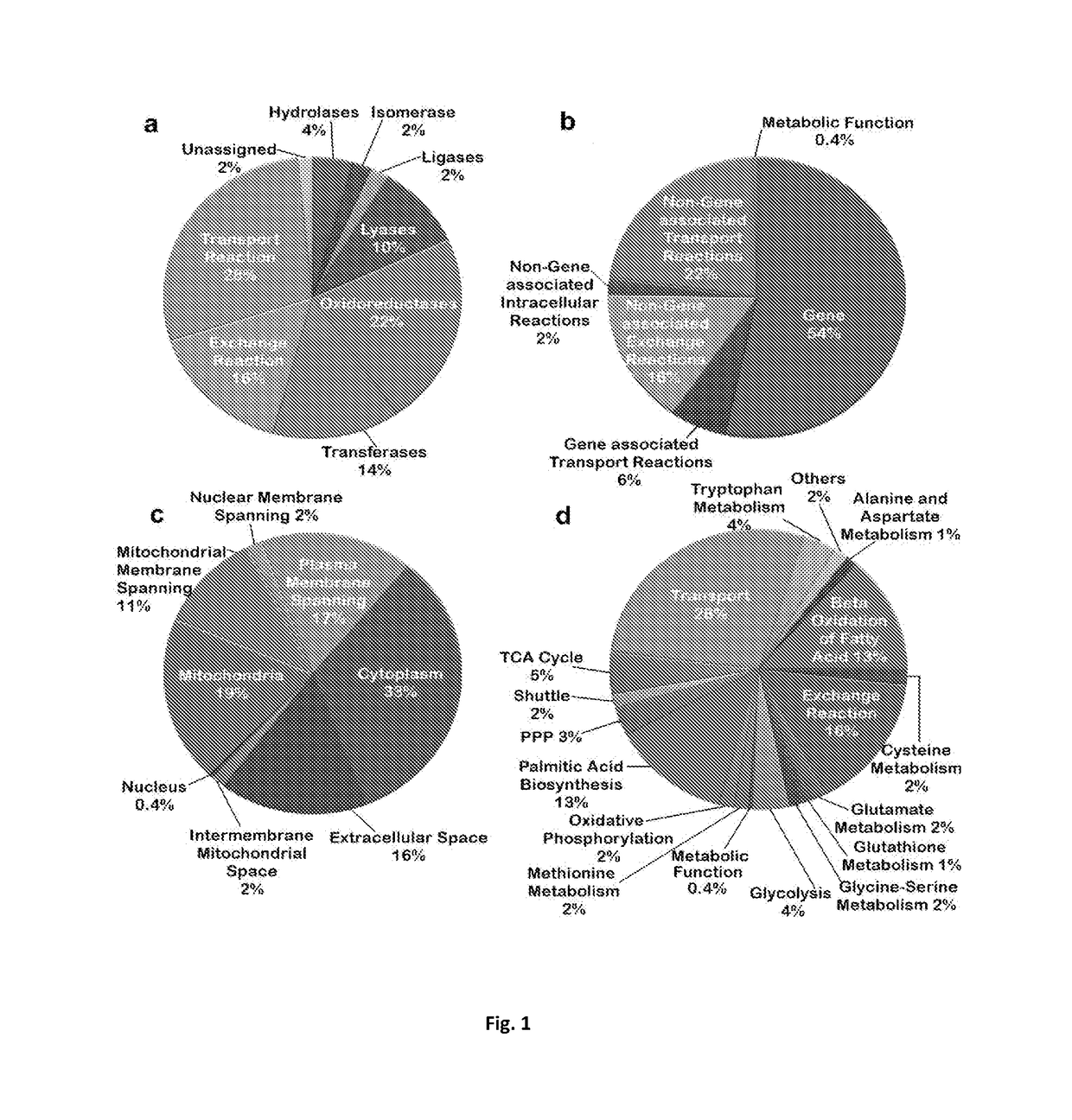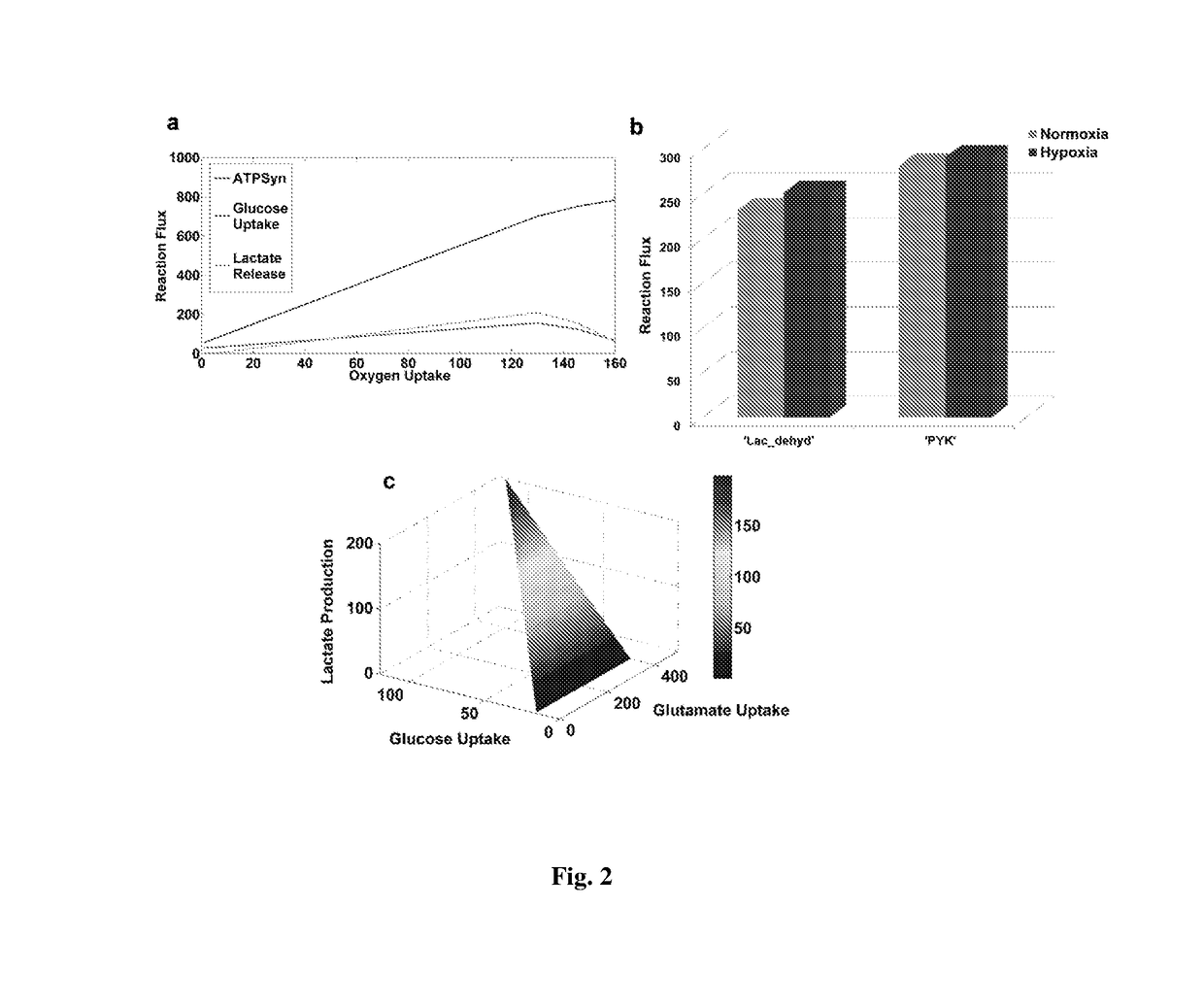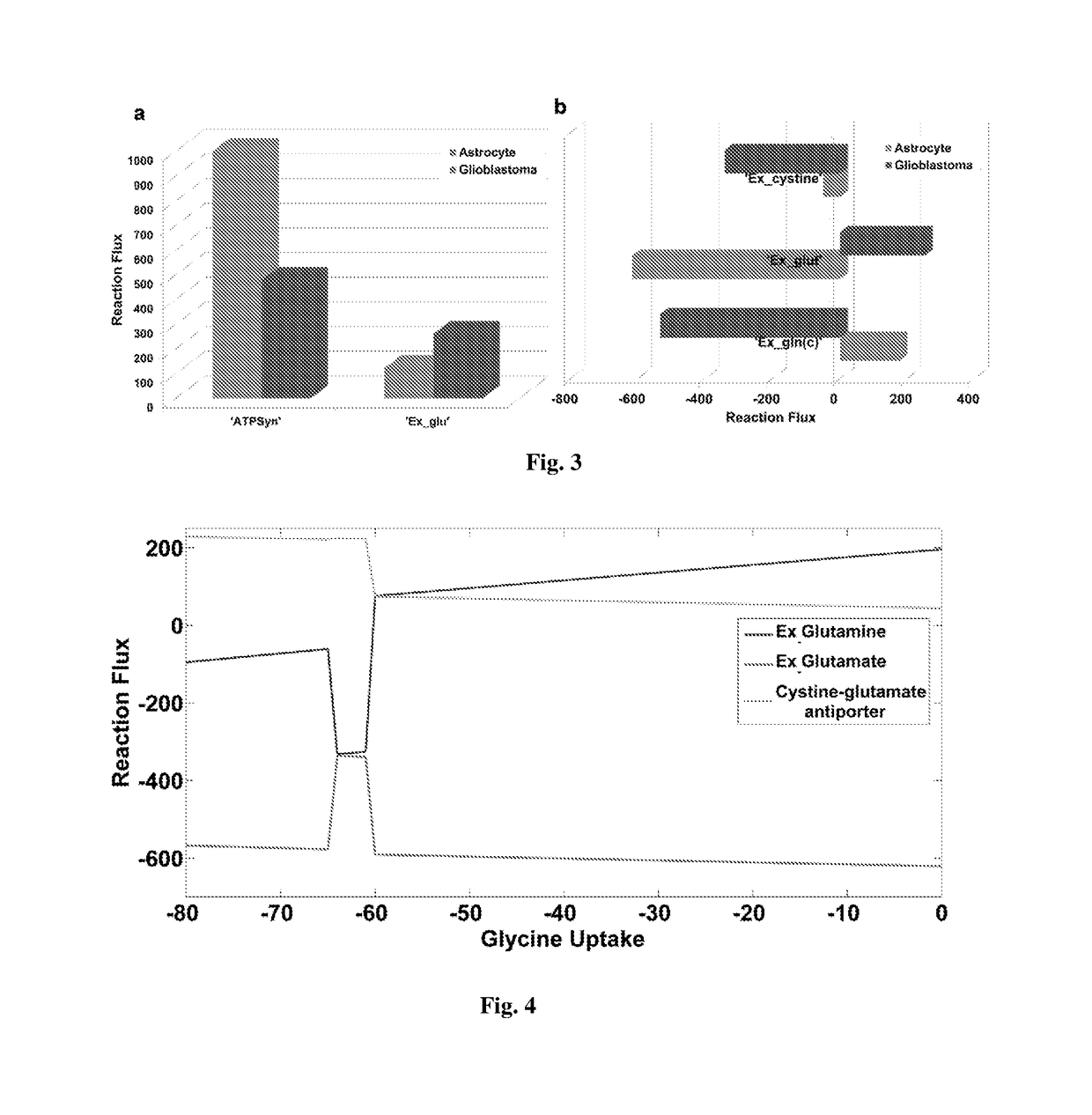Method of Identification of Combinatorial Enzymatic Reaction Targets in Glioblastoma Specific Metabolic Network
- Summary
- Abstract
- Description
- Claims
- Application Information
AI Technical Summary
Benefits of technology
Problems solved by technology
Method used
Image
Examples
example 1
Reconstruction of the Comprehensive Astrocyte / Glioblastoma Metabolism Model Pathway
[0075]In order to construct a network of pathway reactions to understand complex differences in the metabolic behaviour of astrocyte and glioblastoma through a context-specific constraint-based model for astrocyte / glioblastoma metabolism, information relating to the role of metabolic enzymes to crucial biological pathways and internal reactions, their appropriate subcellular locations, transports and exchanges were compiled using a plethora of protein databank sources and pathway interaction databases. Basis of this reconstruction was to identify gene-protein-reaction (GPR) network along with appropriate transport and exchanges. The GPR was reconstructed considering reactions that contribute to ATP synthesis and glioblastoma growth.
[0076]The reactions considered in the model and their corresponding Enzyme Commission Numbers (EC Numbers) were retrieved from Expasy Enzyme (Bairoch, A., 2000, Nucleic aci...
example 2
Flux Balance Analysis (FBA)
[0078]Flux Balance Analysis is a mathematical approach designed to evaluate flow of metabolites through a metabolic network. In the present invention metabolic reactions were represented in a tabulated form of reaction matrix, of stoichiometric coefficients of each reaction. The present metabolic network indicated a relationship established between metabolites and reactions in the form of an S-matrix which comprised of 159 metabolites and 247 reactions, building up the S-matrix of dimension ‘159×247’. The score assigned to each element of the S-matrix, Sxy, represented the stoichiometry of metabolite ‘x’ in reaction ‘y’. A positive score signified production of the metabolite and a negative score implied its consumption in the reaction. The column vector v had 247 fluxes, including 39 exchange reactions and 69 transport reactions. FBA formalizes flux distribution through the whole metabolic network as the dot product of S-matrix with vector v. All reaction...
example 3
Selection of Objective Function
[0079]The metabolic requirement of the cancerous cells (glioblastoma, in the present case) is not completely sufficed by diverting flux towards production of ATP through Oxidative Phosphorylation, which directs toward the requirement of an altered metabolism which can fulfil both the energy and metabolic requirement for the growth of the cells. Therefore, in the present study, two objective functions were defined:
[0080](i) ATP synthesis through oxidative phosphorylation (ATPSyn)
ATPSyn=adp[m]+pi[m]+4 h+[i]->h2o[m]+atp[m]+3 h+[m] [Eq. (i)]
[0081](ii) a metabolic demand reaction that will dually satisfy the requirements of growth and ATP (GBM_BM). To define the metabolic requirement of the model ribose-5-phosphate, r5p(c), oxaloacetate, oaa(m), succinate, succ(m) and glutathione, glt(c) were included as components of the objective function, selected on the basis of their contribution as (a) precursor to the nucleotide biosynthesis and synthesis of amino a...
PUM
 Login to View More
Login to View More Abstract
Description
Claims
Application Information
 Login to View More
Login to View More - R&D
- Intellectual Property
- Life Sciences
- Materials
- Tech Scout
- Unparalleled Data Quality
- Higher Quality Content
- 60% Fewer Hallucinations
Browse by: Latest US Patents, China's latest patents, Technical Efficacy Thesaurus, Application Domain, Technology Topic, Popular Technical Reports.
© 2025 PatSnap. All rights reserved.Legal|Privacy policy|Modern Slavery Act Transparency Statement|Sitemap|About US| Contact US: help@patsnap.com



